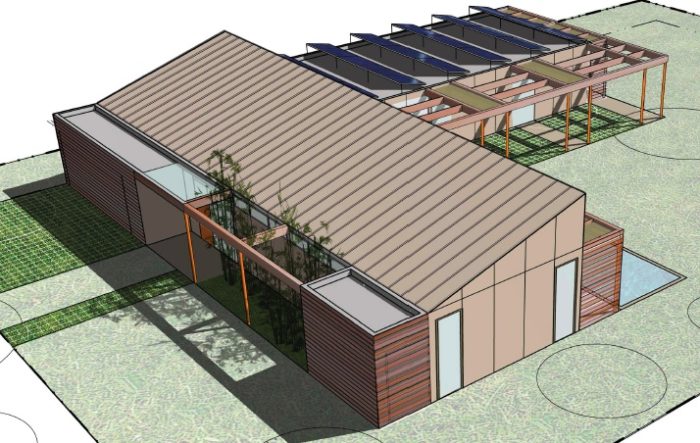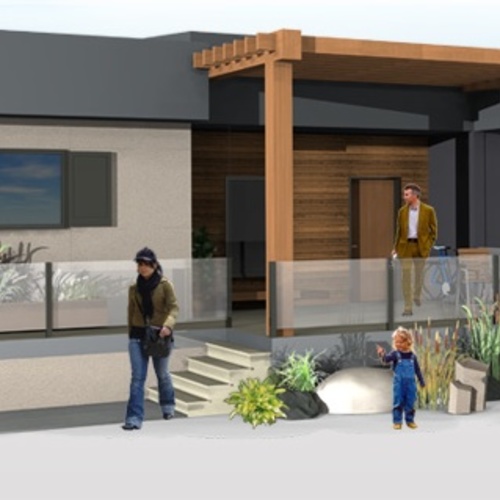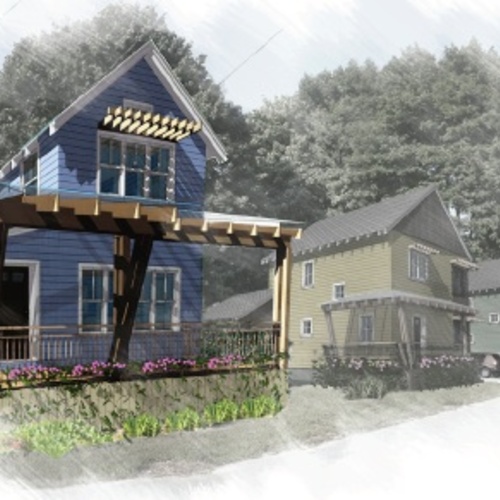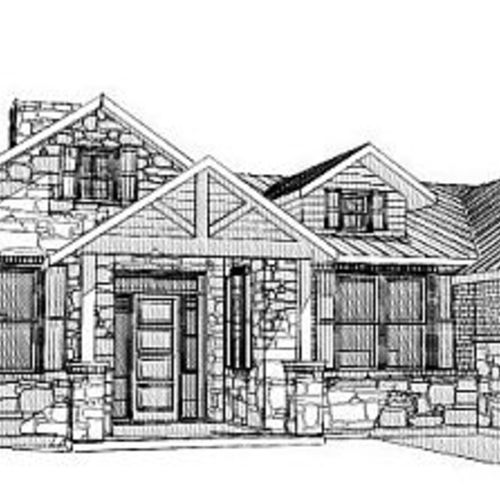Image Credit: Earth Bound Homes and Leddy Maytum Stacy Architects
Update: A clarification of the modeled net energy use has been added to the text below.
David Edwards, owner of Earth Bound Homes, based in Santa Clara, California, says his company has built three homes that have earned some of the highest scores ever awarded by Build It Green’s GreenPoint Rated program. He adds, however, that the attention to detail that went into one of those projects, known as the Kaneda Residence, was especially notable.
Located in the San Francisco Bay Area Peninsula town of Cupertino, the house is about 2,400 sq. ft. and includes more than 1,200 sq. ft. of windows; siting to maximize solar gain in the winter; a photovoltaic array currently configured to deliver 5.8 kW; R-23 exterior walls and an R-60 roof insulated with closed-cell polyurethane foam supplemented with fiberglass insulation; a Daikin Altherma air-source heat pump; a six-panel solar thermal array that heats the water for the home and the property’s backyard pool, which also is designed to act as a heat sink during the summer months; a graywater harvesting system that irrigates the landscape; and, based on a blower-door test, airtightness of 0.7 air changes per hour at 50 Pascals of pressure difference. (Click here for a pdf showing more details about the design and energy systems.)
A slow start tracking performance
On an annual basis, the building is designed to require zero energy for hot water and feed electricity – about 1.1 kWh per sq. ft. of conditioned space per year – back into the grid. Edwards says, though, that even though construction was completed in September 2009, the owners and building team couldn’t begin tracking the home’s performance until recently. The home’s first air-source heat pump had to be pulled because required parts became unavailable; a second system was installed but then recalled by the manufacturer. Performance tracking finally began about two months ago, when the Daikin Altherma system was installed. “We’re giving it a year before we come up and tout numbers,” Edwards says.
The project landed a GreenPoint Rated score of 268 and LEED for Homes Platinum certification. Edwards adds he is not a liberty to disclose the per-square-foot cost of the project, but did say that, because of the detail work and quality of the materials used, it was easily over twice that of a comparably sized home built to California’s Title 24 code, commonly known as CalGreen. “The Kaneda project,” he says, “was an envelope that we had never pushed so far.”
Weekly Newsletter
Get building science and energy efficiency advice, plus special offers, in your inbox.
















0 Comments
Log in or create an account to post a comment.
Sign up Log in